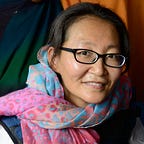Strengthening data preparedness and access to timely data on food security across the Pacific
Timely access to reliable data on food security is vital for decision making in times of crisis, especially for the Pacific in the context of the COVID-19 pandemic and climate change. Pre-existing vulnerability to natural hazards and the impacts of climate change, coupled with the ongoing pandemic have rendered Pacific countries particularly vulnerable and made the need for strengthening national capacities for data collection and analysis more critical than ever. In the medium to long term, climate-related disasters are expected to increase in number and scale, especially in relation to El Niño and La Niña cycles.[1] Five of the world’s top 15 disaster prone countries, including numbers one and two, are in the Pacific.[2]
Among other socio-economic indicators, food security in the Pacific remains under the spotlight with COVID-19 and climate shocks converging to compound the effects on household income, food consumption and nutrition. Timely, transparent and comprehensive datasets related to food systems, revealing trends in vulnerabilities and inequities, are a critical component of effective disaster risk management. There is an ongoing pressing need for timely data on food security to be readily accessible across the disaster risk management cycle to inform national responders and their preparedness and response activities.
Open data is a key principle that guides the work of the Vulnerability Analysis and Mapping (VAM) technical unit at the World Food Programme. VAM collects data related to food systems with the objective of making this information as timely, accessible and transparent as possible.
mVAM data collection
In 2020, the WFP Pacific Multi Country Office (MCO) deployed mobile Vulnerability Analysis and Mapping (mVAM), to regularly collect data on the effects of COVID-19 and climate shocks on household food security and livelihoods across Fiji, Samoa, Tonga, Vanuatu, and Kiribati.
This data is collected through mVAM using mobile phone surveys and live telephone interviews. Indicators such as Food Consumption, which is a way to understand the quantity and quality of a household’s diet, livelihood coping strategies and basic elements relevant to nutrition which serve as a proxy indicator, were collected. The data collected against these indicators was then processed and analyzed to understand the risk of food insecurity to the population of concern.
The initiative supports safe remote data collection that can be disaggregated by age, gender and disability at the household level and provides high-frequency and operationally relevant data to key stakeholders including government. It also supports accountability to affected populations through automated two-way communication that provides respondents and the public access to near real-time information through online dashboards.
Remote data collection
Ensuring key stakeholders have access to timely information to prepare and respond to the impact of shocks on the food security situation of vulnerable populations is of increased importance during COVID-19 and in responding to shocks in general, especially in areas with limited access. Remote data collection is a timely, flexible, and efficient way to collect this information.
How mVAM data is used
In the Pacific the mVAM approach has enabled WFP and government partners to track the situation regionwide over time and understand any increased food security vulnerabilities as a result of the COVID-19 pandemic. Furthermore, it provides further clarity and context to responders on household food security in regard to natural disasters and climate change. This initiative, while geared towards analysing COVID-19 related data, also serves the objective of providing a holistic vision of fluctuations in food security in the Pacific, which is among the most disaster-prone in the world.
Regular dialogues with national Food Security clusters helped inform contextualizing the mVAM approach for the countries where it has been launched. Regular briefings on mVAM results are also provided through the Regional Pacific Food Security Cluster which includes representatives from national clusters, regional organizations including the Pacific Community (SPC) and University of the South Pacific (USP), UN agencies, donors, NGOs, and civil society.
Pacific Data Hub
The Pacific Data Hub provides a regional database that aligns closely with WFPs principles and policies, through improving data accessibility and maintaining respect for key data protection and privacy principles.
With the current COVID-19 health risks and travel restrictions, mVAM’s timely insights into the effects of COVID-19 on food security has come at an important time. This enables governments to use the mVAM data to understand the effects of COVID-19 on food security as well as having the potential to inform disaster risk reduction activities for food security including anticipatory actions. In Fiji, through the government led COVID-19 Data Working Group, mVAM has been adapted and deployed to monitor the effects of containment measures on food security, livelihoods, and access to assistance across the Central and Western divisions. The findings have been used to inform strategic advocacy and decision making related to current and planned future food security and assistance interventions. This information will also assist key stakeholders with their disaster risk reduction, including preparedness measures, ahead of the next cyclone season.
Note: This piece has been adapted from an earlier article written by WFP and published in the Pacific Community (SPC) newsletter. “Mobile Vulnerability Analysis and Mapping of Food Systems: Supporting Access to Timely and Open Data in the Pacific”, 7 September 2021.
Download
mVAM dashboard links for Fiji, Kiribati, Samoa, Tonga and Vanautu can be found here.
[1] In most of the Pacific Island Countries and Territories (PICTs), El Niño is linked to greater drought risk caused by higher temperatures and below-average rainfall between December and February. In Kiribati, Tuvalu and Nauru, El Niño events are usually associated with higher rainfall and potential coastal flooding.
[2] World Risk Report 2020, Bündnis Entwicklung Hilft and Ruhr University Bochum — Institute for International Law of Peace and Armed Conflict (IFHV).
